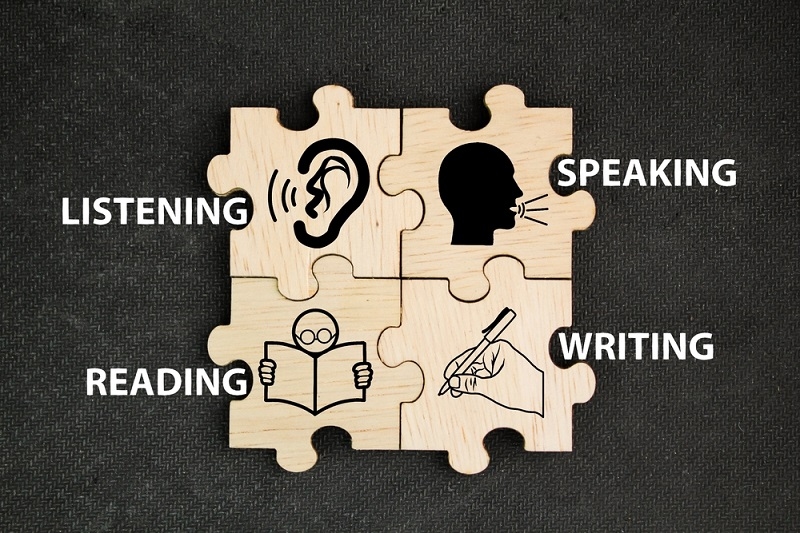AI for ELA Tools to Improve Reading and Writing Skills

Teachers handle a lot each day and English Language Arts often demands even more. There are lessons to plan, readings to review, writing tasks to guide and students who all need something slightly different. This is why many classrooms have started using AI for ELA. Not as a shortcut, but as a support system that makes daily work easier to manage. When used with intention, these tools help teachers organize lessons, adjust difficulty levels and guide students through reading and writing in a way that feels more personal.
Before talking about tools, it helps to look at what ELA actually includes and why it works well with technology.
What is ELA
ELA stands for English Language Arts. It brings together reading, writing, speaking, listening and language skills. Teachers lead students through stories, articles, grammar, vocabulary work, discussions and writing assignments. It is one subject, but it branches into many small tasks that connect to each other.
Because ELA covers so many skill areas, teachers spend a lot of time preparing materials. This is where ELA tools can genuinely reduce effort. Instead of starting everything from scratch, teachers can build on what these tools generate and then shape it into something that fits their style. This keeps the planning process practical without taking away the teacher’s role.
Top Pick: How Technology is Shaping The Future of Education
Why More Classrooms Now Use AI for ELA

Schools are not looking for complicated systems. They want something that blends into existing routines. The reason AI for ELA works is because it handles tasks that often take hours, but do not always need manual work.
1. Preparation becomes simpler
Teachers often need reading passages, quick questions, vocabulary lists and writing prompts. ELA technology tools can produce these in minutes. This does not replace the teacher. It just gives a starting point that is easy to adjust.
2. Support for different levels
Students rarely read at the same pace or the same level. AI for ELA can rewrite reading material, adjust difficulty and create leveled tasks. This helps teachers provide support without juggling multiple versions of the same assignment.
3. Feedback becomes more consistent
Writing needs clear input. Students need to know what to fix, how to improve and where their strengths are. AI for ELA gives small nudges that help students refine their work. Teachers can then focus on deeper skills like analysis, tone and content.
These reasons are why AI for ELA is becoming easier to trust inside classrooms.
Best AI for ELA
There are plenty of tools out there, but the best ones work without adding complexity. Below are the best AI for ELA platforms that offer steady results and support real classroom needs. All of these tools have been used widely for reading, writing and planning.
Edcafe AI
Edcafe AI offers a set of ELA technology tools that genuinely help teachers save time. It creates lesson plans, reading activities, quizzes, flashcards, writing tasks and feedback. Teachers can choose a topic, set a grade level and get material that they can edit quickly. Since ELA English Language Arts depends heavily on consistent practice, having ready to use material saves a lot of energy. Edcafe AI also helps level reading passages, which makes it easier to support students who need simpler explanations.
ReadTheory
ReadTheory focuses on reading. Students get passages matched to their level, and the questions adjust based on performance. This steady, adaptive approach works well for English Language Arts, because reading growth comes from regular practice. Teachers get a simple dashboard that shows progress without adding more reporting work.
ChatGPT
ChatGPT helps teachers think through ideas, outline lessons, prepare writing tasks and create samples. Students can also use it to brainstorm or check grammar, but only when guided. When used the right way, it is one of the most flexible ELA tools, especially for writing support and quick concept building.
Canva Magic Write
Many ELA assignments now involve visuals along with writing. Canva Magic Write helps students build presentations, digital posters and short creative pieces. Since ELA English Language Arts now includes media literacy, Canva fits well with project work.
Curipod
Curipod builds interactive lessons. Teachers can create slides that include polls, questions and short activities that help with speaking and listening. These skills are part of ELA, and Curipod makes it easy to keep discussions structured.
Perusall
Perusall works best for close reading. Students annotate texts together, respond to each other and highlight key points. This builds deeper thinking and helps teachers check understanding in a natural way.
Each tool fits a different purpose, which is why teachers often combine two or three based on classroom needs.
Also check: AI in Teaching And Its Impact in the Real Classroom
How to Use AI for ELA in a Practical Way
Adding technology only works when it supports real habits. Here are simple ways teachers can use AI for ELA without changing their entire routine.
1. Build reading tasks faster
Teachers can select a topic and generate passages, vocabulary lists and comprehension questions. This helps maintain consistency and saves time.
2. Give writing structure
Students often freeze at the beginning of a writing task. With ELA tools, they can get outlines or starting points that help them move forward. Teachers still guide the quality of the final draft, but the early struggle becomes easier to manage.
3. Adjust difficulty levels
Differentiation becomes easier when passages can be recreated at multiple levels. This supports mixed ability classrooms without doubling the workload.
4. Use feedback tools carefully
AI feedback works best when used as a first layer. Students fix basic issues, and then teachers step in for higher level instruction. This keeps writing lessons focused and less repetitive.
5. Encourage responsible use
Students need reminders that AI supports learning. It should not replace their own understanding. Clear guidelines help maintain trust and authenticity.
Why ELA Technology Tools Work Well in This Subject
ELA depends on a cycle of reading, writing and revision. Students improve when they practice consistently. AI helps keep that cycle moving by reducing waiting time and giving students small boosts when they get stuck. Teachers also get more room to plan thoughtful lessons instead of rushing through preparation. Because ELA spreads across many skill areas, ELA technology tools give structure where it is needed.
The Future of AI for ELA
AI will continue to grow inside classrooms, but the teacher will always guide the process. Future tools will likely offer better reading insights, more accurate writing support and improved accessibility for students who need extra help. The goal is not to replace instruction. It is to help teachers give students clearer paths through English Language Arts.
More to Discover: Homeschooling Trends And The Shift To Flexible Learning
Final Thoughts
ELA is a skill based subject that requires constant practice. With the right mix of ELA tools, teachers can plan more efficiently, personalize learning and keep students engaged. AI for ELA works best when used with purpose. It supports the teacher’s role and strengthens the learning experience for students across different levels. When done right, it makes English Language Arts more organized and more approachable for everyone in the classroom.
This content was created by AI
